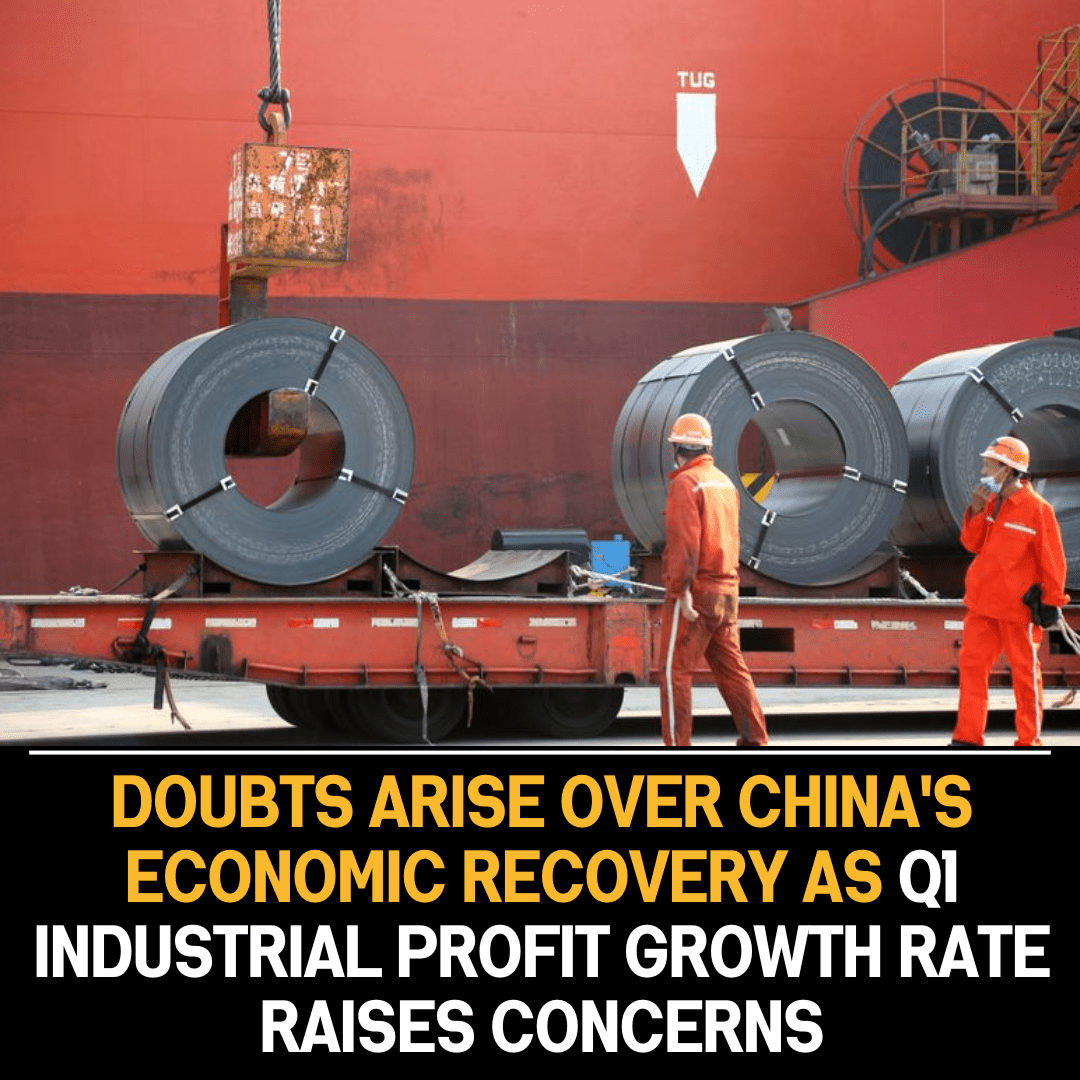The emergence of concerns surrounding China’s economic recovery in the wake of slower growth in industrial profits during the first quarter of the year highlights potential challenges and uncertainties facing the world’s second-largest economy. China’s industrial sector, a key driver of its economic growth, experienced a notable deceleration in profit growth during the first quarter, prompting analysts and policymakers to scrutinize the underlying factors and implications for the broader economy.
The slowdown in industrial profit growth is significant as it reflects challenges across various sectors, including manufacturing, mining, and utilities. Factors contributing to this deceleration may include rising input costs, supply chain disruptions, weaker demand both domestically and globally, and government efforts to curb excess capacity and environmental pollution.
One of the key concerns stemming from the slower industrial profit growth is its potential impact on China’s overall economic recovery trajectory. Industrial activity has traditionally been a primary engine of growth in China, driving investment, employment, and export revenues. A slowdown in this sector could dampen overall economic momentum, affecting employment levels, consumer spending, and investor confidence.
Moreover, the implications of China’s economic performance extend beyond its borders, given its role as a major global trading partner and contributor to global supply chains. Slower growth in China could have ripple effects on global trade, commodity prices, and market sentiment, impacting businesses and economies around the world.
In response to these concerns, Chinese authorities may implement measures to support industrial growth and stimulate economic activity. This could include targeted fiscal and monetary policies aimed at boosting investment, incentivizing innovation, and spurring consumer spending. Additionally, efforts to address structural challenges in the industrial sector, such as overcapacity and technological upgrading, may be intensified to enhance long-term competitiveness and resilience.
However, navigating China’s economic recovery amidst the challenges posed by slower industrial profit growth is likely to require a delicate balancing act. Authorities must carefully manage the trade-offs between supporting short-term growth and addressing longer-term structural issues such as debt sustainability, environmental sustainability, and technological innovation.
Overall, while concerns over China’s economic recovery amid slower Q1 industrial profit growth are valid, the situation also presents opportunities for policymakers to implement targeted interventions and reforms to foster sustainable and inclusive growth in the years ahead. By addressing underlying challenges and embracing innovation-driven strategies, China can continue to play a pivotal role in driving global economic prosperity.









